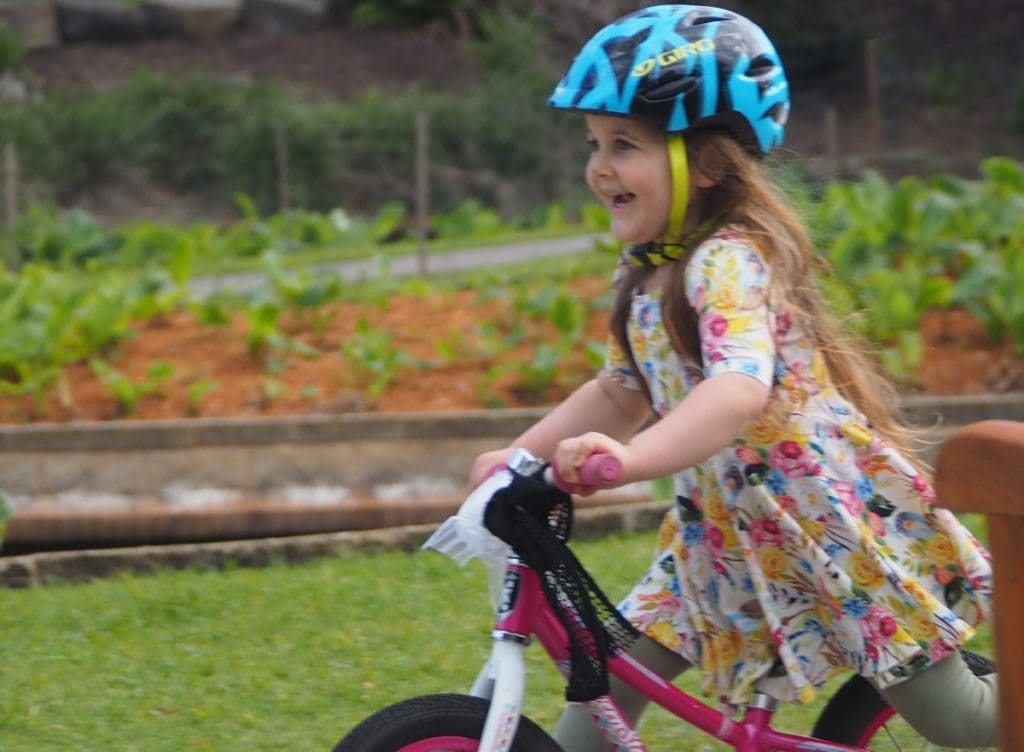Why Am I Launching the Micromobility Report?

By Phil Latz, Publisher
There’s an old but enduring saying, ‘A picture says a thousand words.’
Why am I launching the Micromobility Report? Just one look at the photo of my then three year old granddaughter riding her balance bike in the park says it all.
As we grow up, we are taught to suppress or even hide our emotions, but there is no disguising the unbridled joy of a child riding their bike.
It deeply saddens me to know how much her opportunities to continue doing what she loves will be so greatly limited by decades of bad choices that our nation has made.
Therefore I feel compelled, as I have been for many years, to try to do something about this situation. Given my relatively rare combination of decades long cycling, advocacy, media and business backgrounds, Micromobility Report will hopefully be the conduit through which I can make the most effective contribution.
I fully understand that micromobility embraces much more than just riding bikes and we aim to be as open as possible to all new vehicles, technologies and ideas.
However, in most cases, the same decisions that we make to enable one form of micromobility, will help all other forms.
Here are four keys to accelerating Australia’s adoption of micromobility:
1. Tolerance
We need to start with a tolerant society. A key measure of a successful nation is how it treats minorities, both officially via laws, and at a behavioural level.
By definition, anything new starts as a minority activity and must reach a critical mass or ‘tipping point’ before it wins mainstream acceptance.
It’s no coincidence that the nations in which micromobility is advancing most rapidly are also the nations most accepting of behaviours that are different to the mainstream.
2. Government Support
Secondly, our political and media systems need to be sufficiently open and fair, dare I say free from corruption, so that we make important decisions that don’t just bow to rich lobby groups. Without this, lower cost solutions, such as micromobility, will always be just thrown the crumbs, while the high cost solutions keep their snouts firmly in the troughs of public funding and favourable legislative frameworks.
3. Act Upon Evidence
Thirdly, we need to put more value on proven success stories and the data that they provide.
Why do the same battles have to be fought over and over again, city by city, suburb by suburb? Once a measure has already been proved to work in multiple cities around the world, why do advocates have to sacrifice years of their precious time and resources to convince local authorities that the same measures will work here too?
A classic example is lowering speed limits, which would be a huge plus for all micromobility solutions. The data has been proven beyond reasonable doubt through the case studies of more enlightened cities who started adopting lower speed years ago. Lower speed limits save lives and reduce injuries, yet cost negligible time penalties to motorists.
Despite this irrefutable evidence, our state based roads and transport authorities have, with rare exceptions, fought tooth and nail for years to resist 30kph speed limits becoming the norm for local and city centre streets. Their actions have directly cost many lives, for no benefit.
4. Make the Most of Current Opportunities
Finally, we need to make the most of the unique opportunity that the tragedy of Covid-19 has given us. It is a chance for our nation to rapidly pivot. It has given our population a glimpse of the quieter streets, cleaner air and better safety that could be ours permanently if we stopped sacrificing ourselves to noisy, polluting, dangerous and highly inefficient transportation systems that far too many of us accept without question.
I’ve given the Micromobility Report the tagline, ‘Go further with less!’
Its most obvious meaning is that a small vehicle will use less resources than a larger one. Not just in terms of energy, but in terms of the noise, pollution, energy, financial cost and space that the micromobility solution requires to be manufactured, shipped, sold, used, parked and ultimately recycled.
But there’s a deeper meaning for our society. As a nation and as a global species, we will fare better in the years ahead if we change our mindset from the current over-consumption that experts say would currently require about four planets like earth to be sustainable.
Mars dreamers aside, we only have one planet that can sustain life. Transport is one of the biggest burdens we’re imposing upon our planet and micromobility is a key part of the solution to reducing this burden, for the sake of all of our children and their children to come.
The time is now long overdue for all of us to think less about immediate, short term, often illusory gains and give more consideration to what sort of world we’re leaving to our grandchildren.

I am pleased to see that Tolerance is at the top of your list, Phil. There is plenty of evidence that Australians (both individually and collectively) have a long way to go in this regard. I see intolerance and impatience all the time as a cyclist and car driver, but it goes much further than this, e.g. lack of patience with disabled or slow people in shops, and even strong remnants of racial attitudes from the shameful White Australia policy years. Australia needs to work towards achieving its “Fair Go” claim.
Love your passion for micromobility Phil. We all need to care more about the planet that we’re leaving to our children, and theirs going forward.